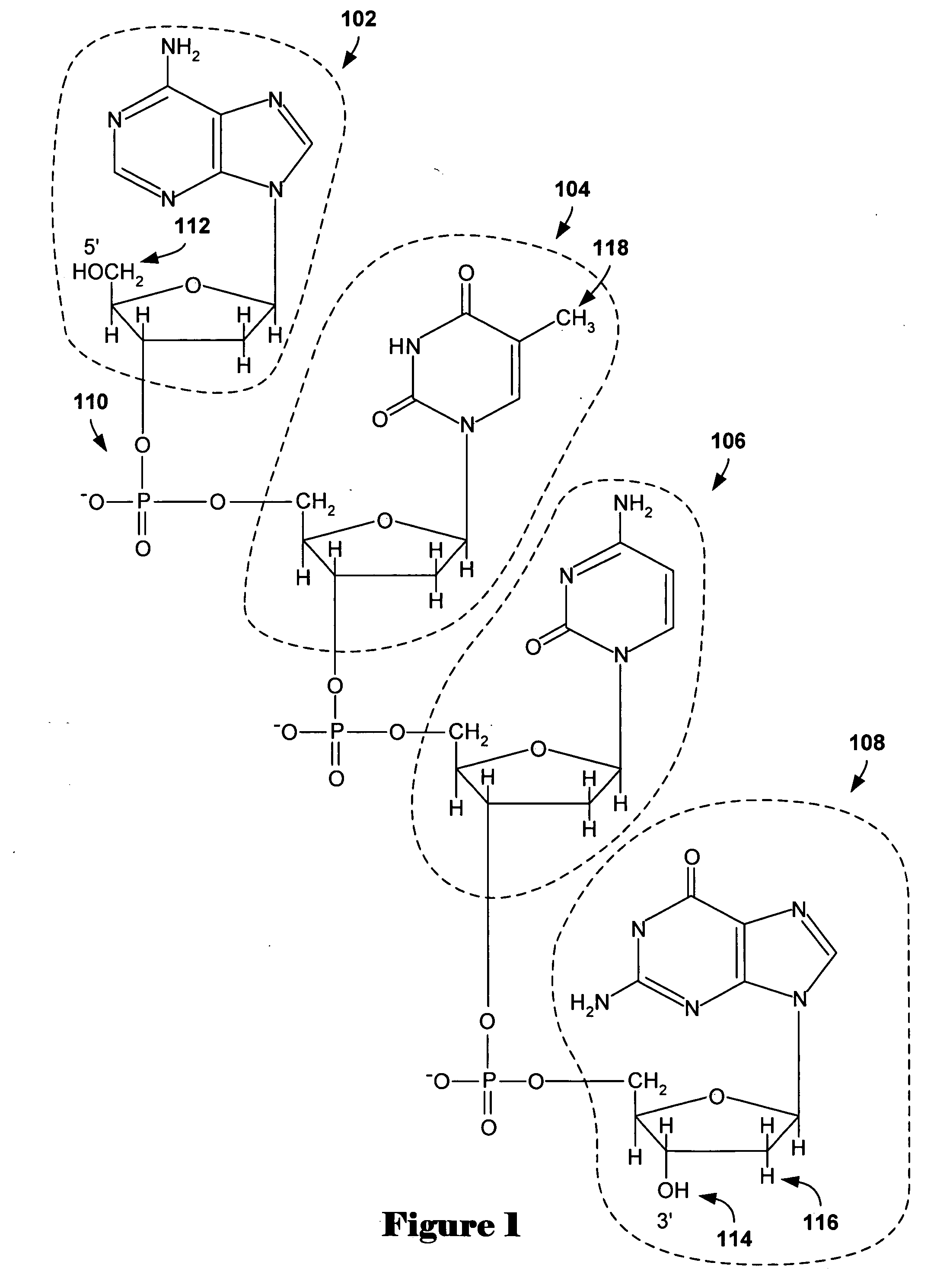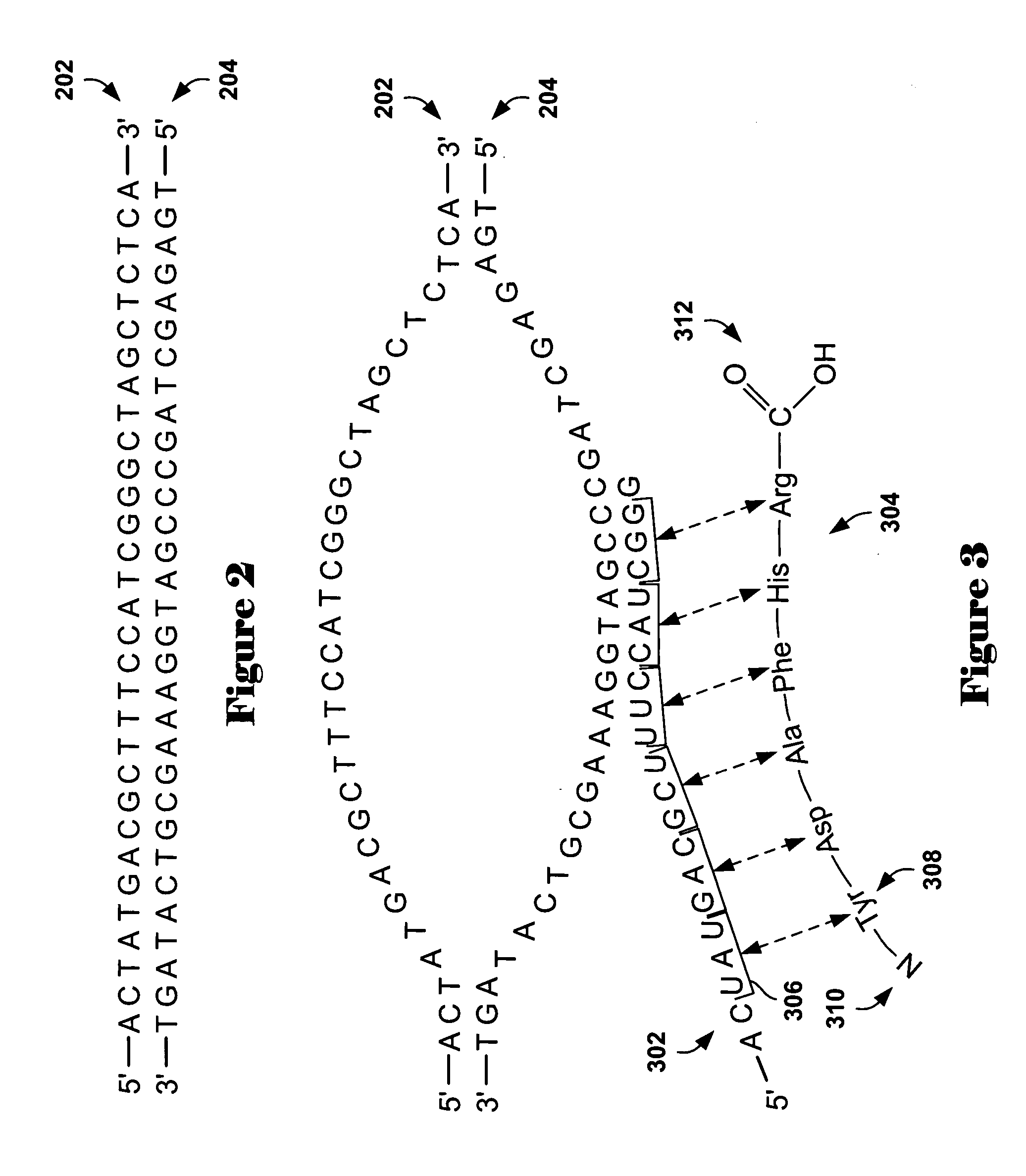Method and system for analysis of array-based, comparative-hybridization data
a comparative hybridization and array-based technology, applied in the field of array-based comparative hybridization data analysis, can solve problems such as quantitative analysis of cgh data, and achieve the effect of increasing quantitative precision
- Summary
- Abstract
- Description
- Claims
- Application Information
AI Technical Summary
Benefits of technology
Problems solved by technology
Method used
Image
Examples
Embodiment Construction
[0017] Embodiments of the present invention provide methods and systems for analysis of comparative genomic hybridization (“CGH”) data. The methods and systems are general, and applicable to comparative hybridization data obtained from a variety of different experimental approaches and protocols. Described embodiments, below, are particularly applicable to microarray-based CGH data, obtained from high-resolution microarrays containing oligonucleotide probes that provide relatively uniform and closely-spaced coverage of the DNA sequence or sequences representing one or more chromosomes. One application for methods of the present invention is for detecting amplified and deleted genes. Examples are discussed below. However, any subsequence of chromosomal DNA may be amplified or deleted, and CGH techniques may be applied to generally detect amplification or deletion of chromosomal DNA subsequences. Comparative hybridization methods can be used to detect amplification or deletion of subs...
PUM
| Property | Measurement | Unit |
|---|---|---|
| heat- | aaaaa | aaaaa |
| chemical structure | aaaaa | aaaaa |
| structure | aaaaa | aaaaa |
Abstract
Description
Claims
Application Information
 Login to View More
Login to View More - R&D
- Intellectual Property
- Life Sciences
- Materials
- Tech Scout
- Unparalleled Data Quality
- Higher Quality Content
- 60% Fewer Hallucinations
Browse by: Latest US Patents, China's latest patents, Technical Efficacy Thesaurus, Application Domain, Technology Topic, Popular Technical Reports.
© 2025 PatSnap. All rights reserved.Legal|Privacy policy|Modern Slavery Act Transparency Statement|Sitemap|About US| Contact US: help@patsnap.com



